Smooth, chamfered volumes create a harmless yet robust expression. A modular thinking inspired by islands evokes a sense of the interior components floating.
Rethinking police car interiors
This bachelor's thesis for the industrial design programme explores how a car interior would look if it was directly tailored to the needs and requirements of Swedish police officers on active duty. Several police officers have been interviewed and consulted during the work, and field studies have been conducted in police cars, at police stations, and in police training facilities. The main perceived problems were inadequate and disorganized storage, cramped working environments, and extreme wear and tear. Design and functional proposals have been explored through sketches, physical models, as well as 3D modelling, and evaluated against active-duty police officers throughout the project. The result is a car interior concept with organized, equipment-specific storage; a new modular floor plan for better space utilization and reparability; durable materials that embrace circular processes. Guidance has been received from professionals with insights into car interior design, police car development, and construction throughout the project.
Design problem
One of the primary tools in daily police work – the car – is currently not fully custom-made for the police despite the very specific needs and requirements of the agency. The reason for this is cost – the production volumes are simply too small and expensive for an in-house development from scratch to be commercially viable. Instead, regular mid-range family cars are modified to varying degrees of effectiveness to match police needs. This has resulted in a working environment that is deficient in many respects and likely would not be accepted in a regular office context. This project explores what a car interior specifically designed for the police could look like.
Method
This thesis primarily adopts a user-centred perspective and follows the double diamond method (British Design Council, 2005), a systematic approach to driving design projects through different phases. Principles of ecological sustainability have also been adhered to. Interviews with police officers using the car as their work tool were conducted in the project's initial phase, alongside several field studies examining police cars and trying out police equipment. Continuous feedback was gathered from interviewees throughout the development process, using methods such as simple image presentations and virtual reality. Previous research was analysed to formulate a more specific problem statement. This was followed by a functional analysis, sustainability analysis, and two personas with three scenarios each, along with a creative and functional direction for the project. The ideation phase begins with rough sketching of function and layout to meet the identified needs and requirements. After generating a sufficient number of ideas, a first selection is made, and the most promising proposals are further developed into three different concepts focusing on functionality. These concepts are modelled in digital 3D and presented to multiple police officers and supervisors for feedback. Based on this evaluation, two concepts are eliminated, and a new one is developed. To enhance the credibility of the final concept evaluation, virtual reality is used in combination with a full-scale cardboard model. Once a concept is chosen, it undergoes further form and function development, followed by digital 3D modelling and visualization with testing of different material configurations. Finally, a physical functional model of the steering wheel module is produced.
Result
The outcome of this thesis is a car interior for 2035, designed for the Swedish police's specific needs. It is based on an electric D-SUV package – a medium-sized city SUV. The design concept addresses issues like disorganized storage, lack of space, limited administrative functionality, and excessive wear and tear. The interior introduces a new layout with tailored work environments for both driver and passengers, centralized shared storage, and easier access to personal storage. Unnecessary features like large infotainment screens are removed, and necessary car control is simplified to a panel for basic physical input. Durable, easy-to-clean materials replace virgin fossil-based ones, prioritizing circular processes. The intentionally modular design facilitates component interchangeability and upgrades, with potential for use for the interior platform in various professional contexts beyond policing.
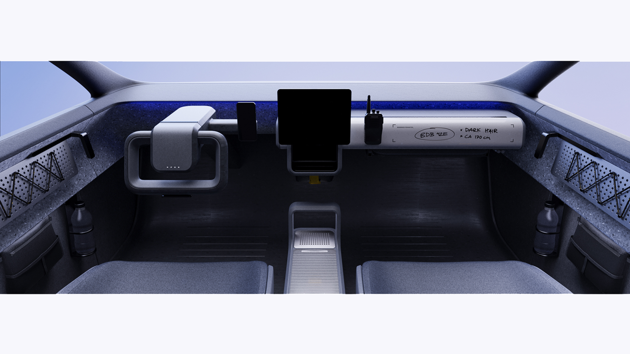
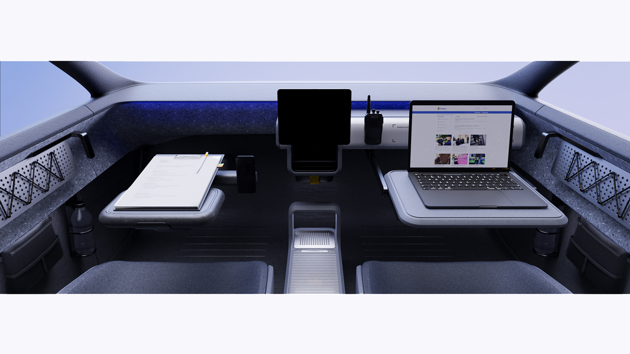
The spacious interior can easily be rearranged for administrative work. For safety reasons, this can only be done while the transmission is in ‘’P’’.
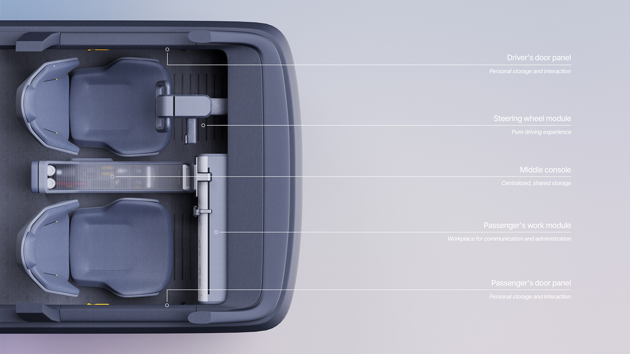
The interior is divided into two parts, clearly linked to the officers' division of labour – driving the vehicle, and handling police tasks on the go.
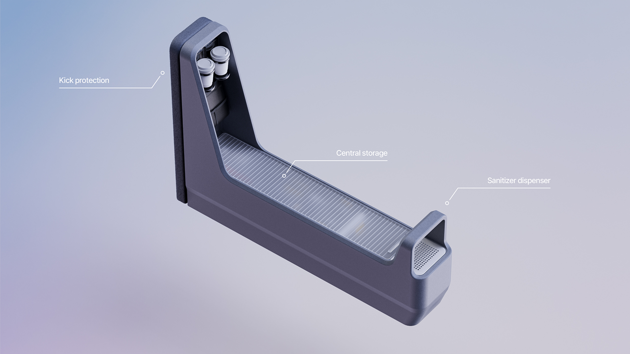
Throughout the interior, several niche features can be found. These were developed in collaboration with active field officers for a useful result.
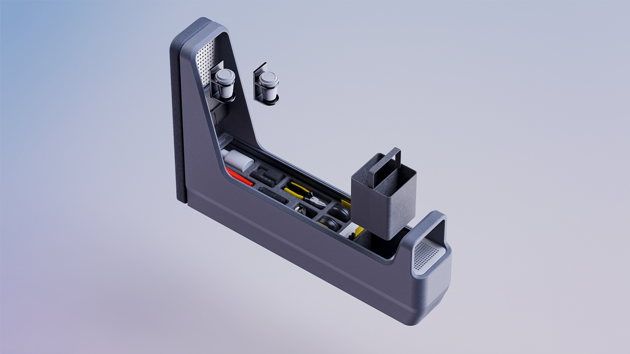
In the middle console, there is the police's shared equipment, a waste bin with recycling options, and a modular system for interior accessories.
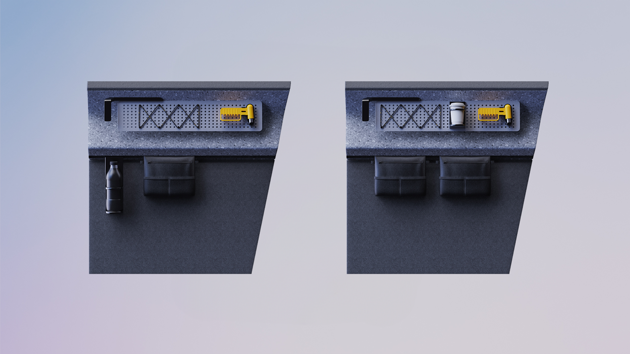
The door panels share the same modular system for accessories and can be adapted to different needs. A personal storage bag can also be found here.
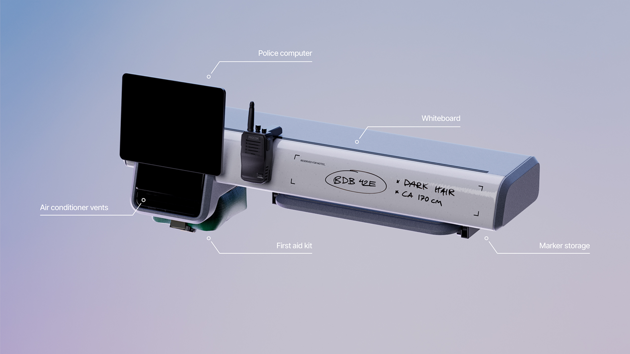
The passenger’s work module is a hub for police tasks on the go. It includes a whiteboard for quick notetaking, such as license plate numbers.
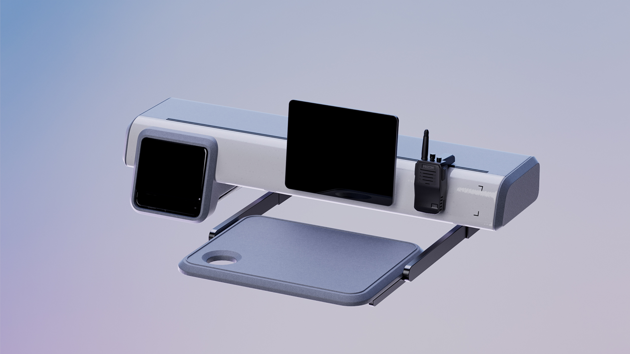
Thanks to the police computer and radio being mounted on a rail, they can be easily moved for a more comfortable working position.
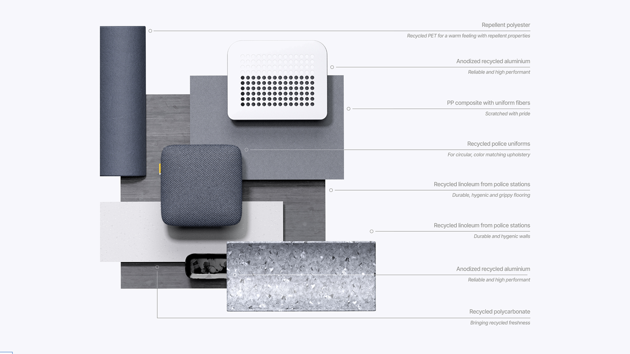
The CMF focuses on material circularity, durability, and hygiene. The color palette is inspired by police uniforms and incorporates natural hues from recycled police uniforms.
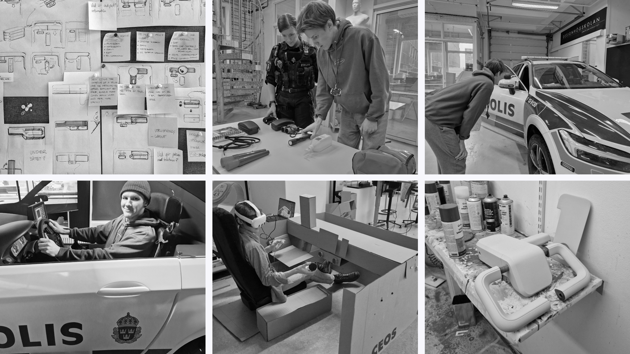
The project has been carried out with close support from police officers and involved extensive 1:1-scale testing, to achieve the most accurate result possible.










